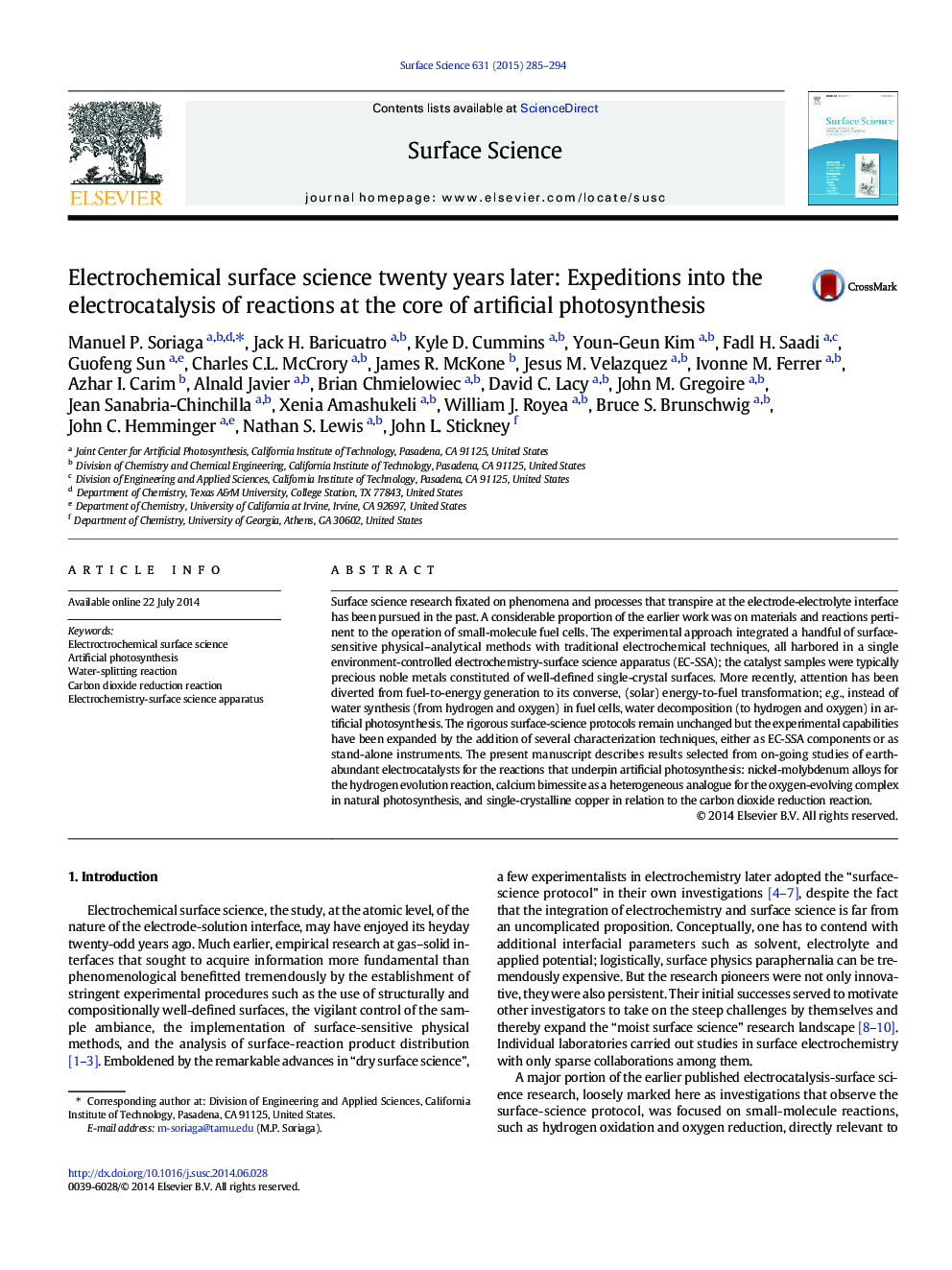| Article ID | Journal | Published Year | Pages | File Type |
|---|---|---|---|---|
| 5421968 | Surface Science | 2015 | 10 Pages |
Abstract
Surface science research fixated on phenomena and processes that transpire at the electrode-electrolyte interface has been pursued in the past. A considerable proportion of the earlier work was on materials and reactions pertinent to the operation of small-molecule fuel cells. The experimental approach integrated a handful of surface-sensitive physical-analytical methods with traditional electrochemical techniques, all harbored in a single environment-controlled electrochemistry-surface science apparatus (EC-SSA); the catalyst samples were typically precious noble metals constituted of well-defined single-crystal surfaces. More recently, attention has been diverted from fuel-to-energy generation to its converse, (solar) energy-to-fuel transformation; e.g., instead of water synthesis (from hydrogen and oxygen) in fuel cells, water decomposition (to hydrogen and oxygen) in artificial photosynthesis. The rigorous surface-science protocols remain unchanged but the experimental capabilities have been expanded by the addition of several characterization techniques, either as EC-SSA components or as stand-alone instruments. The present manuscript describes results selected from on-going studies of earth-abundant electrocatalysts for the reactions that underpin artificial photosynthesis: nickel-molybdenum alloys for the hydrogen evolution reaction, calcium birnessite as a heterogeneous analogue for the oxygen-evolving complex in natural photosynthesis, and single-crystalline copper in relation to the carbon dioxide reduction reaction.
Related Topics
Physical Sciences and Engineering
Chemistry
Physical and Theoretical Chemistry
Authors
Manuel P. Soriaga, Jack H. Baricuatro, Kyle D. Cummins, Youn-Geun Kim, Fadl H. Saadi, Guofeng Sun, Charles C.L. McCrory, James R. McKone, Jesus M. Velazquez, Ivonne M. Ferrer, Azhar I. Carim, Alnald Javier, Brian Chmielowiec, David C. Lacy,
